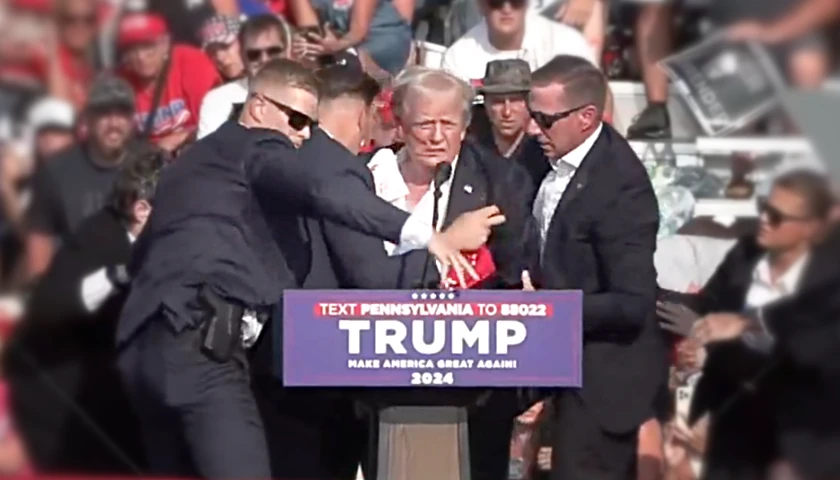by Rebeka Zeljko
The Senate Homeland Security Committee unveiled a report Wednesday detailing the “preventable” Secret Service security failures that resulted in the assassination attempt of former President Donald Trump on July 13.
Leading up to the assassination attempt, there was no clear chain of command and major communication discrepancies which were “foreseeable, preventable, and directly related to” to the events that transpired, according to the report. As a result, Trump was nearly assassinated in July by 20-year-old gunman Thomas Matthew Crooks during a rally in Butler County, Pennsylvania, prompting an onslaught of criticism and bipartisan calls to action.
“From planning missteps, to the siloed and flawed communication to the lack of effective coordination between law enforcement, to the breakdowns in technology, the Secret Service’s failures that allowed an assassination attempt on former President Trump at his July 13 rally were shocking, unacceptable, and preventable – and they led to tragic consequences,” Chairman Gary Peters said in a press release.
 “This was a failure on the part of the United States Secret Service,” Secret Service acting Director Ronald Rowe said after the Senate report was released. “It’s important that we hold ourselves to account for the failures of July 13th and that we use the lessons learned to make sure that we do not have another failure like this again.”
“This was a failure on the part of the United States Secret Service,” Secret Service acting Director Ronald Rowe said after the Senate report was released. “It’s important that we hold ourselves to account for the failures of July 13th and that we use the lessons learned to make sure that we do not have another failure like this again.”
The Secret Service released their own report just five days before the Senate detailing similar failures. The five page report confirmed that several “communications deficiencies” ultimately “inhibited the collective awareness” of federal and local law enforcement securing the rally.
The Senate report echoed these “preventable” failures, including an interview with a Secret Service counter sniper who reportedly saw officers drawing firearms toward the building Crooks was positioned on, but who did not think to notify anyone to evacuate the former president off of the rally stage. The day of the rally, Crooks had been spotted by several attendees, flagged by Secret Service and even identified by a local counter sniper over an hour before Trump stepped on stage.
The counter sniper, who didn’t have a clear line of sight, was only assigned to the rally due to “credible intelligence” of a threat, according to the report. There were previously no snipers assigned to work at the rally.
The Senate committee report also criticized the Secret Service agents who “denied individual responsibility” and “deflected blame” for the security failures, and could not identify who made the final decisions for planning the rally security, according to the report.
“Our initial findings clearly show a series of multiple failures of the U.S. Secret Service (USSS) and an inexcusable dereliction of duty,” ranking member Rand Paul said in a press release. “Not only did USSS fail to ensure the AGR roof was adequately covered, they were also aware of a suspicious individual with a rangefinder for at least 27 minutes and did not delay proceedings or remove former President Trump from the stage, even after being informed that the suspicious individual was on the roof of the AGR building.”
“Someone needs to be held accountable for these egregious failures by the USSS, and despite USSS, DHS, FBI, ATF, and other federal agencies’ continued obstruction of our bipartisan investigation, I will continue to push for answers and accountability,” Paul continued.
Just two months after the Butler rally shooting, 58-year-old Ryan Wesley Routh was arrested and charged with several federal counts including attempting to assassinate a presidential candidate after his “AK-47 style rifle with a scope” was spotted by a Secret Service agent on the Trump International Golf Course in West Palm Beach, Florida.
U.S. Secret Service spokesman Anthony Guglielmi reaffirmed in a statement obtained by The Associated Press Wednesday that the agency has already increased Trump’s security detail to the “highest level of protection that the U.S. Secret Service can provide.”
“We are also diligently examining long-term solutions to challenges such as enhancing communications and interoperability with our federal, state and local partners to make sure our coordinated efforts during protective events are seamless,” Guglielmi said.
– – –
Rebeka Zeljko is a reporter at Daily Caller News Foundation.




